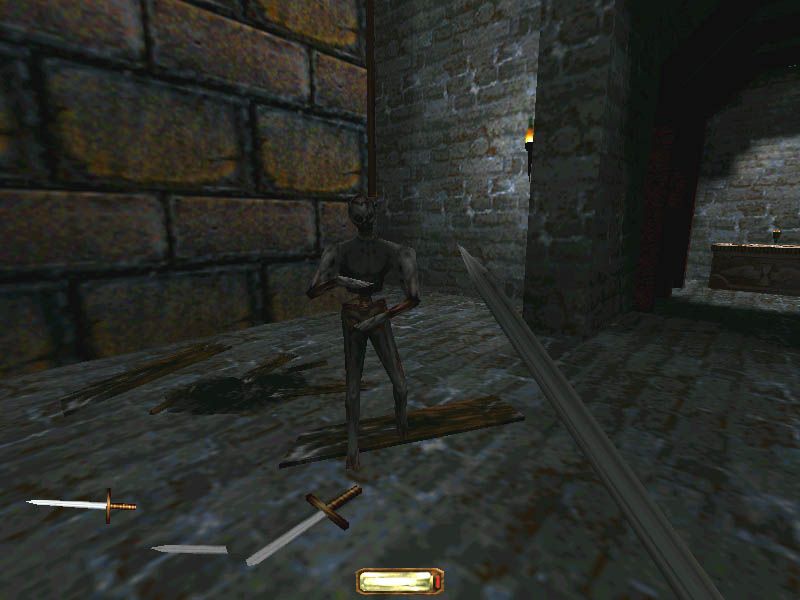

It's a more sedate grapple-space to move through, and rare in that its freedom of movement is the idea rather than an exploitable quirk in the engine. If you're here because you like grappling hooks, then it's relevant to your interests.
#Shadwen thief the dark project Pc#
It's called Floating Point, it's free, and it was made by PC Gamer's former section editor Tom Francis. This game is called "can I use the Thief to complete this section, even though it was obviously designed for the Wizard?" Often, the answer is yes.Īt this point, I should probably point to another 2D grappling hook game-one designed entirely around swinging as the main method of level traversal. But both Trine games also contain a secret hidden mini-game for grappling hook aficionados. Used properly, it can be a graceful tool. You can, on select levels, chain these swings-at times resulting in long, unbroken stretches of undulation. Here, you can even grapple onto one surface, break off and re-attach to another, all while still in mid-swing.

One of its three characters is a Thief, and her grappling hook allows for a similarly awkward battle against physics. Trine is, intentionally or not, all about this. But a few other 2D games feature that same spirit of exploitable traversal. Subsequent Worms games enforced turn times, essentially ruining my enjoyment of them. To anyone but those directly involved in the match, this was an unspeakably tedious spectacle. That maximises the speed boost from bouncing off the wall, and, with luck, propels the worm up and around. The trick is to extend the rope fully, smack into a solid surface, and then retract. With some effort, it's possible to swing 180 degrees and beyond-eventually landing on top of the platform the worm is swinging from. They're also consistent in their implementation, which led us to a great understanding of their potential. Worms' rope mechanics are, in essence, bizarre. We'd place them above the level, both to protect our own guys from air strikes and to have more surfaces to grapple on to. With these rules, a worm can travel from one side to the other-their turn ending only if they take fall damage. You can use the ninja rope multiple times per turn, and we gave ourselves unlimited time to make our way across the map. Friends and I would play multiplayer matches with a very specific set of rules: no turn timer, unlimited girders, and unrestricted access to the grappling hook (or "ninja rope," as it's called in-game). There's another traversal tool that I consistently love in games: the grappling hook. My appreciation for good grappling hooks-and good here doesn't mean realistic-started with the original version of Worms. Sometimes it's nice to tell gravity to go and do one. I like Prototype-a game in which you can run up, and leap off, and glide over buildings-even though a part of me suspects that it's really a bit rubbish. I'm a somewhat overweight guy in his thirties. If I can move around a game in interesting ways, then I will probably like it. Monkey Bee has one of the most distinct middle-sections I've yet to see emerge from Audiosurf's level generator.Ī satisfying traversal system isn't the only thing I look for in a game, but it is one of a few broad areas that define my taste. Ship-based stealth levels are tighter and more claustrophobic than their inevitable "big warehouse" counterpart. If you go back through the Why I Love articles I've written to date- stealth on ships, TF2's Scout or playing Chinese-style opera in Audiosurf-all have, to a greater or lesser extent, been about systems or experiences that change how you traverse through a level. Today, we get into the swing, as Phil explains his love of grappling hooks. In Why I Love, PC Gamer writers pick an aspect of PC gaming that they love and write about why it's brilliant.


 0 kommentar(er)
0 kommentar(er)
